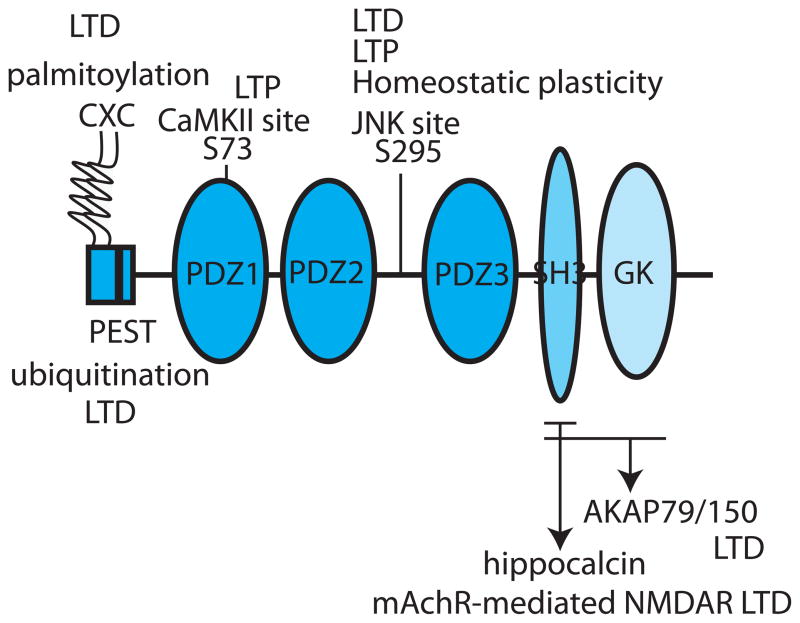Figure 1.
Schematic diagram of sites in PSD-95 involved in synaptic plasticity. PSD-95 is involved in synaptic plasticity in several scenarios. Palmitoylation, ubiquitination and phosphorylation of S295 have been proposed to be involved in regulating activity-dependent synaptic cycling of PSD-95 that influence the anchoring of synaptic AMPARs at the synapse during LTD [24, 25, 27]. S295 is also thought to be involved in LTP and homeostatic plasticity. The functions of PSD-95 in regulating basal synaptic transmission and plasticity are dissociable. Three lines of evidence show that mutants that do not have impact on the function of PSD-95 in regulating basal synaptic transmission can influence synaptic plasticity. Phosphorylation of S73 by CaMKII is involved in regulating the dynamics of PSD-95 during LTP, and thought to be important for structural and functional plasticity [29]. SH3 domain mediated interaction with hippocalcin is important in mediating mAchR-dependent LTD of NMDARs [34]. The interaction through SH3-GK domain, presumably with AKAP150/79 is thought to be important for mediating LTD [19]. Therefore, PSD-95 has multifaceted effects on synaptic transmission and plasticity.

